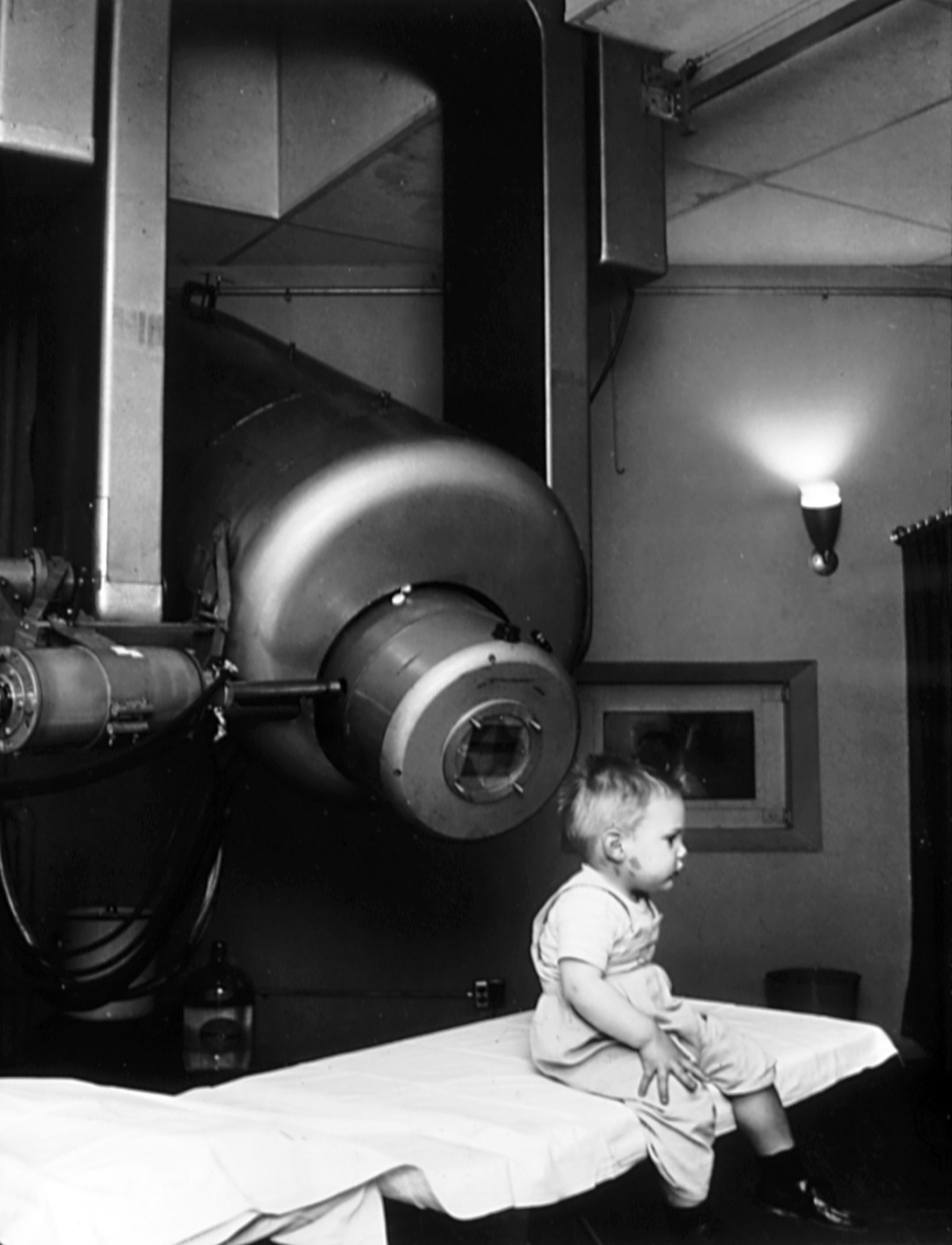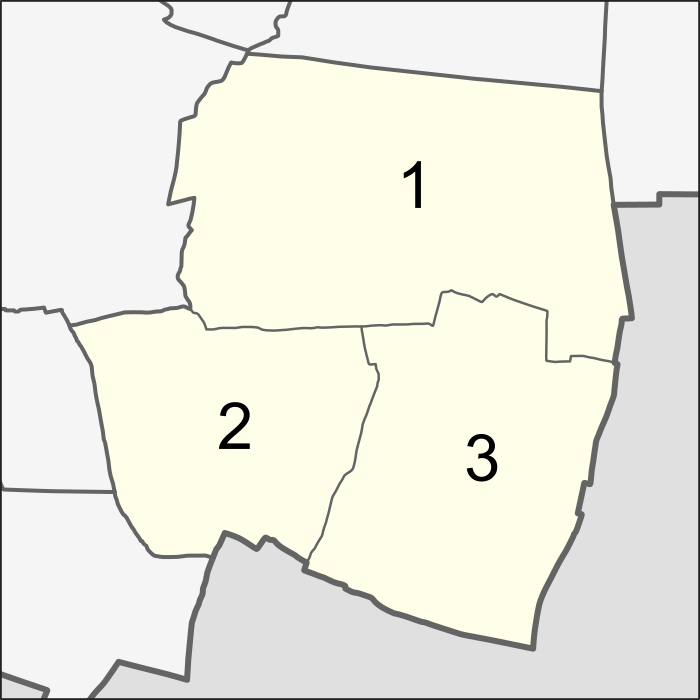|
Samut Prakan Radiation Accident
A radiation accident occurred in Samut Prakan Province, Thailand in January–February 2000. The accident happened when an insecurely stored unlicensed cobalt-60 radiation source was recovered by scrap metal collectors who, together with a scrapyard worker, subsequently dismantled the container, unknowingly exposing themselves and others nearby to ionizing radiation. Over the following weeks, those exposed developed symptoms of radiation sickness and eventually sought medical attention. The Office of Atomic Energy for Peace (OAEP), Thailand's nuclear regulatory agency, was notified when doctors came to suspect radiation injury, some 17 days after the initial exposure. The OAEP sent an emergency response team to locate and contain the radiation source, which was estimated to have an activity of , and was eventually traced to its owner. Investigations found failure to ensure secure storage of the radiation source to be the root cause of the accident, which resulted in ten people ... [...More Info...] [...Related Items...] OR: [Wikipedia] [Google] [Baidu] |
Samut Prakan Province
Samut Prakan province (, , , sometimes rendered Samutprakan or Samutprakarn) is one of the central Provinces of Thailand, provinces of Thailand, established on 9 May 1946 by the ''Act Establishing Changwat Samut Prakan, Changwat Nonthaburi, Changwat Samut Sakhon and Changwat Nakhon Nayok, Buddhist Era 2489 (1946)''. It is a part of the Bangkok Metropolitan Region. Neighbouring provinces are Bangkok, to the north and west, and Chachoengsao province, Chachoengsao to the east. Samut Prakan was previously once home to a Dutch trading post who referred to the area as New Amsterdam. Suvarnabhumi Airport is in Bang Phli district of Samut Prakan province as well as the districts of Bang Kapi district, Bang Kapi, Lat Krabang district, Lat Krabang, and Prawet district, Prawet in neighbouring Bangkok city. History The province was created during the era of the Ayutthaya Kingdom, with its administrative centre at Prapadaeng. It was the sea port of Siam, and was secured with forts, town m ... [...More Info...] [...Related Items...] OR: [Wikipedia] [Google] [Baidu] |
Radiotherapy
Radiation therapy or radiotherapy (RT, RTx, or XRT) is a treatment using ionizing radiation, generally provided as part of cancer therapy to either kill or control the growth of malignant cells. It is normally delivered by a linear particle accelerator. Radiation therapy may be curative in a number of types of cancer if they are localized to one area of the body, and have not spread to other parts. It may also be used as part of adjuvant therapy, to prevent tumor recurrence after surgery to remove a primary malignant tumor (for example, early stages of breast cancer). Radiation therapy is synergistic with chemotherapy, and has been used before, during, and after chemotherapy in susceptible cancers. The subspecialty of oncology concerned with radiotherapy is called radiation oncology. A physician who practices in this subspecialty is a radiation oncologist. Radiation therapy is commonly applied to the cancerous tumor because of its ability to control cell growth. Ionizin ... [...More Info...] [...Related Items...] OR: [Wikipedia] [Google] [Baidu] |
Teletherapy Capsule
External beam radiation therapy (EBRT) is a form of radiotherapy that utilizes a high-energy collimated beam of ionizing radiation, from a source outside the body, to target and kill cancer cells. The radiotherapy beam is composed of particles, which are focussed in a particular direction of travel using collimators. Each radiotherapy beam consists of one type of particle intended for use in treatment, though most beams contain some contamination by other particle types. Radiotherapy beams are classified by the particle they are intended to deliver, such as photons (as x-rays or gamma rays), electrons, and heavy ions; x-rays and electron beams are by far the most widely used sources for external beam radiotherapy. Orthovoltage ("superficial") X-rays are used for treating skin cancer and superficial structures. Megavoltage X-rays are used to treat deep-seated tumors (e.g. bladder, bowel, prostate, lung, or brain), whereas megavoltage electron beams are typically used to treat s ... [...More Info...] [...Related Items...] OR: [Wikipedia] [Google] [Baidu] |
Scrap
Scrap consists of recyclable materials, usually metals, left over from product manufacturing and consumption, such as parts of vehicles, building supplies, and surplus materials. Unlike waste, scrap can have monetary value, especially recovered metals, and non-metallic materials are also recovered for recycling. Once collected, the materials are sorted into types – typically metal scrap will be crushed, shredded, and sorted using mechanical processes. Metal recycling, especially of structural steel, ships, used manufactured goods, such as vehicles and white goods, is an industrial activity with complex networks of wrecking yards, sorting facilities, and recycling plants. The industry includes both formal organizations and a wide range of informal roles such as waste pickers who help sorting through scrap. Processing Scrap metal originates both in business and residential environments. Typically a "scrapper" will advertise their services to conveniently remove scrap metal ... [...More Info...] [...Related Items...] OR: [Wikipedia] [Google] [Baidu] |
Orphan Source
An orphan source is a self-contained radioactive source that is no longer under regulatory control. The United States Nuclear Regulatory Commission definition is: ...a sealed source of radioactive material contained in a small volume—but not radioactively contaminated soils and bulk metals—in any one or more of the following conditions: *In an uncontrolled condition that requires removal to protect public health and safety from a radiological threat *Controlled or uncontrolled, but for which a responsible party cannot be readily identified *Controlled, but the material's continued security cannot be assured. If held by a licensee, the licensee has few or no options for, or is incapable of providing for, the safe disposition of the material *In the possession of a person, not licensed to possess the material, who did not seek to possess the material *In the possession of a State radiological protection program for the sole purpose of mitigating a radiological threat because the ... [...More Info...] [...Related Items...] OR: [Wikipedia] [Google] [Baidu] |
Prawet District
Prawet (, ) is one of the 50 districts of Bangkok, Thailand. It is in the southeast. Neighboring districts are (from the east clockwise) Bang Phli ( Samut Prakan province), Bang Na, Phra Khanong, Suan Luang, Bang Kapi, Saphan Sung and Lat Krabang (Bangkok). The district is best known for Paradise Park, Seacon Square and Suan Luang Rama IX. History Prawet was once part of Phra Khanong District. Prawet was elevated to become a separate district in 1989. Part of Prawet, especially the Suan Luang Sub-district, was carved out to establish Suan Luang District on 14 January 1994. Its name after Khlong Prawet Burirom, a canal that flows through the northern area. In October 2005 the plan to create the special administrative area Nakhon Suvarnabhumi around the new Bangkok airport became public. Prawet was supposed to be one of five districts to be included in this new area. Administration The district is sub-divided into three sub-districts (''khwaeng''). Motto The dist ... [...More Info...] [...Related Items...] OR: [Wikipedia] [Google] [Baidu] |
Nordion
Nordion Inc., a Sotera Health company, is a health science company that provides Cobalt-60 used for sterilization and treatment of disease (radiotherapy). Nordion is headquartered in Ottawa, Ontario, Canada, with facilities in Vancouver, British Columbia and Laval, Quebec. Riaz Bandali is the company's President. The company was acquired by Sotera Health in 2014 for million (equivalent to $million in ). History Founded in 1946, originally the radium sales department of Eldorado Mining and Refining Ltd., the division developed one of the first radiotherapy units that used the radioisotope cobalt-60 to destroy cancerous tumours. Soon after, the division was given responsibility for selling radioisotopes produced by the newly established Chalk River Nuclear Laboratories, a nuclear research facility at Chalk River, Ontario. As a result, in 1951, Eldorado established a commercial products division (CPD) to manage the isotope business, especially cobalt-60 used in cancer treatmen ... [...More Info...] [...Related Items...] OR: [Wikipedia] [Google] [Baidu] |
Office Of Atoms For Peace
The Office of Atoms for Peace (OAP) of Thailand (สำนักงานปรมาณูเพื่อสันติ) in Chatuchak district, Bangkok, Thailand, was established in 1961 as the Office of Atomic Energy for Peace. The OAP serves as the main authority for nuclear research in Thailand. The OAP employs approximately 400 people. The research topics and services provided at the OAP include radioisotope production, gamma radiography, neutron activation analysis, neutron radiography, and gemstone irradiation. The OAP operated a 2-megawatt nuclear research reactor, Thai Research Reactor 1/Modification 1 (TRR-1/M1). The TRR-1/M1 is of the type TRIGA Mark III, built by General Atomics General Atomics (GA) is an American energy and defense corporation headquartered in San Diego, California, that specializes in research and technology development. This includes physics research in support of nuclear fission and nuclear fusion en ..., and began operation in 1962 after bei ... [...More Info...] [...Related Items...] OR: [Wikipedia] [Google] [Baidu] |
Radioisotope
A radionuclide (radioactive nuclide, radioisotope or radioactive isotope) is a nuclide that has excess numbers of either neutrons or protons, giving it excess nuclear energy, and making it unstable. This excess energy can be used in one of three ways: emitted from the nucleus as gamma radiation; transferred to one of its electrons to release it as a conversion electron; or used to create and emit a new particle (alpha particle or beta particle) from the nucleus. During those processes, the radionuclide is said to undergo radioactive decay. These emissions are considered ionizing radiation because they are energetic enough to liberate an electron from another atom. The radioactive decay can produce a stable nuclide or will sometimes produce a new unstable radionuclide which may undergo further decay. Radioactive decay is a random process at the level of single atoms: it is impossible to predict when one particular atom will decay. However, for a collection of atoms of a single nuc ... [...More Info...] [...Related Items...] OR: [Wikipedia] [Google] [Baidu] |
Radioactive Decay
Radioactive decay (also known as nuclear decay, radioactivity, radioactive disintegration, or nuclear disintegration) is the process by which an unstable atomic nucleus loses energy by radiation. A material containing unstable nuclei is considered ''radioactive''. Three of the most common types of decay are Alpha decay, alpha, Beta decay, beta, and Gamma ray, gamma decay. The weak force is the Fundamental interactions, mechanism that is responsible for beta decay, while the other two are governed by the electromagnetic force, electromagnetic and nuclear forces. Radioactive decay is a randomness, random process at the level of single atoms. According to quantum mechanics, quantum theory, it is impossible to predict when a particular atom will decay, regardless of how long the atom has existed. However, for a significant number of identical atoms, the overall decay rate can be expressed as a decay constant or as a half-life. The half-lives of radioactive atoms have a huge range: f ... [...More Info...] [...Related Items...] OR: [Wikipedia] [Google] [Baidu] |






